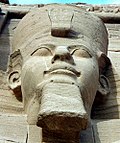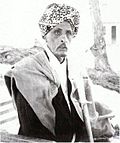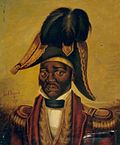Monarch: Difference between revisions
CSV import Tags: mobile edit mobile web edit |
CSV import |
||
| Line 32: | Line 32: | ||
{{stub}} | {{stub}} | ||
{{dictionary-stub1}} | {{dictionary-stub1}} | ||
<gallery> | |||
File:European_monarchies_by_succession.svg|European monarchies by succession | |||
File:The_Nine_Sovereigns_at_Windsor_for_the_funeral_of_King_Edward_VII.jpg|The Nine Sovereigns at Windsor for the funeral of King Edward VII | |||
File:Ruling-monarchs.jpg|Ruling monarchs | |||
File:RamsesIIEgypt.jpg|Ramses II Egypt | |||
File:Sultan_Mohamoud_Ali_Shire_2.jpg|Sultan Mohamoud Ali Shire | |||
File:European_monarchies.svg|European monarchies | |||
File:Elizabeth_II_greets_NASA_GSFC_employees,_May_8,_2007_edit.jpg|Elizabeth II greets NASA GSFC employees, May 8, 2007 | |||
File:Crown_Prince_&_Princess_&_Emperor_Showa_&_Empress_Kojun_wedding_1959-4.jpg|Crown Prince & Princess & Emperor Showa & Empress Kojun wedding 1959 | |||
File:Sultan_Mehmet_III_of_the_Ottoman_Empire.jpg|Sultan Mehmet III of the Ottoman Empire | |||
File:Norodom_Sihanouk_1941.jpg|Norodom Sihanouk 1941 | |||
File:The_Sinhalese_Royal_Family_of_King_Devanampiya_Tissa_and_Prince_Uththiya.JPG|The Sinhalese Royal Family of King Devanampiya Tissa and Prince Uththiya | |||
File:Jean_Jacques_Dessalines.jpg|Jean Jacques Dessalines | |||
</gallery> | |||
Latest revision as of 20:55, 23 February 2025
Monarch is a title often used to denote the sovereign head of state in a monarchy. Monarchs may be autocrats (as in all absolute monarchies) or may be ceremonial figureheads, exercising only limited or no reserve powers at all, with actual authority vested in a parliament or other body (as in many constitutional monarchies). A monarch can reign in multiple monarchies simultaneously.
Etymology[edit]
The word "monarch" (Latin: monarcha) came via Greek from the an Indo-European root which also produced the word monk, among others. It is derived from the Greek μονάρχης, monárkhēs (from μόνος monos, "one/singular," and ἄρχω árkhō, "to rule" (compare ἄρχων arkhon, "leader, ruler, chief") which referred to a single, at least nominally absolute ruler.
Characteristics[edit]
In many cases, a monarch will also be linked with a state religion. Some monarchs have titles that are religious in nature, for example, the pope in the Roman Catholic Church, and the Dalai Lama, the spiritual and former political leader of Tibet. Many monarchs are addressed with high honorifics, for example, "His/Her Majesty", "His/Her Highness" or "His/Her Holiness".
Roles[edit]
Monarchs can have various roles such as:
- Head of state
- Head of government
- Commander-in-chief of the armed forces
- Supreme governor of the established church
- Defender of the Faith
- Fount of Justice
- Fount of Honour
See also[edit]
|
|
|
-
European monarchies by succession
-
The Nine Sovereigns at Windsor for the funeral of King Edward VII
-
Ruling monarchs
-
Ramses II Egypt
-
Sultan Mohamoud Ali Shire
-
European monarchies
-
Elizabeth II greets NASA GSFC employees, May 8, 2007
-
Crown Prince & Princess & Emperor Showa & Empress Kojun wedding 1959
-
Sultan Mehmet III of the Ottoman Empire
-
Norodom Sihanouk 1941
-
The Sinhalese Royal Family of King Devanampiya Tissa and Prince Uththiya
-
Jean Jacques Dessalines















